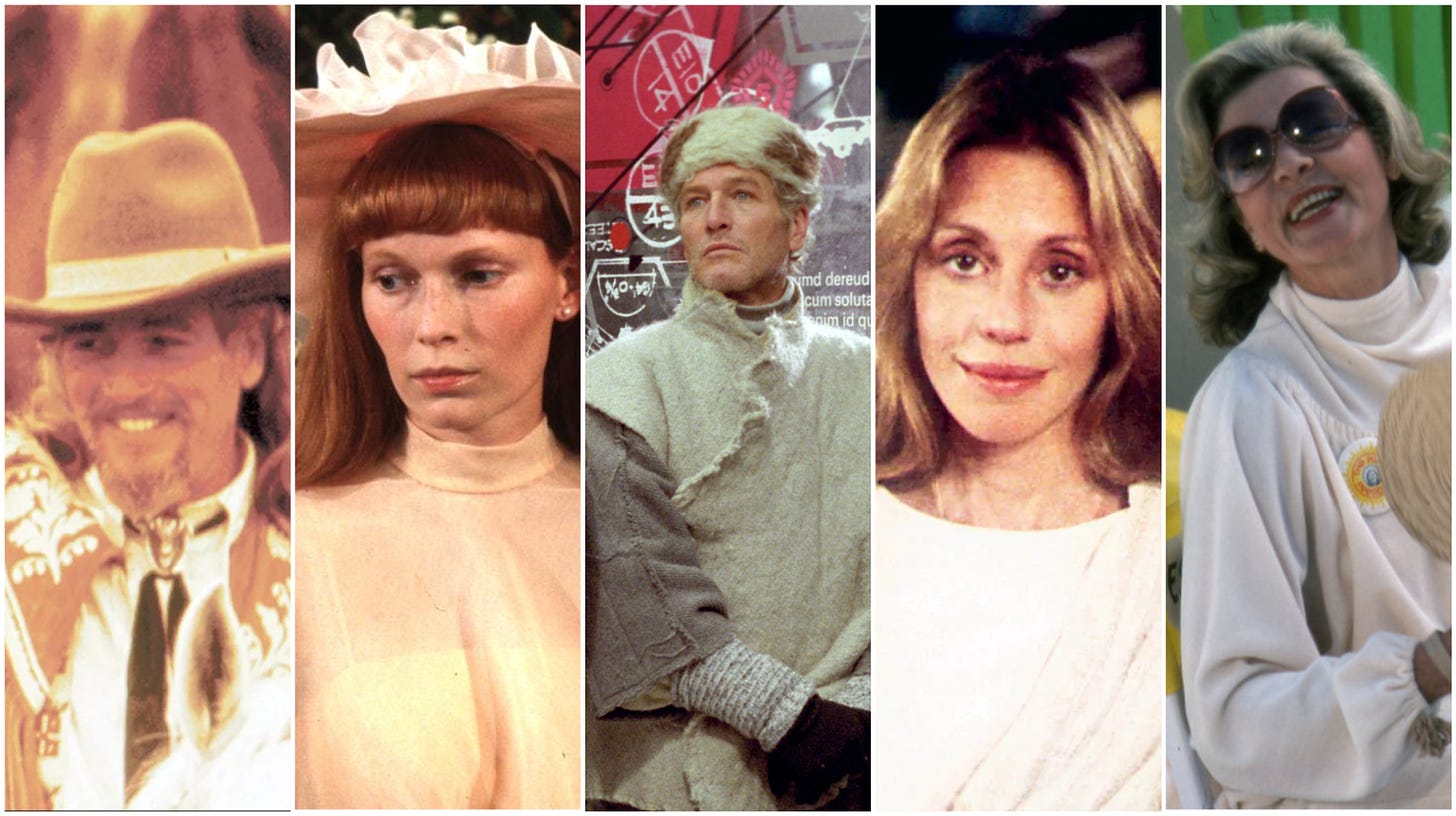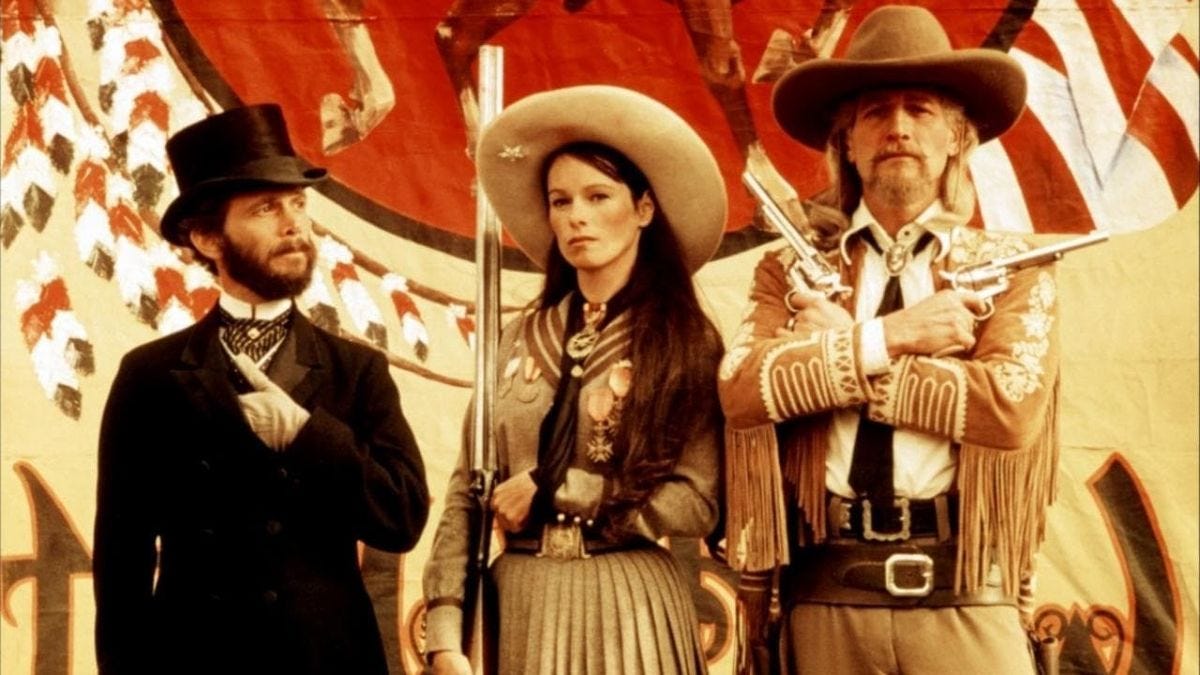Altman at the Other End of the Seventies
Altman helped redefine American films in the first half of the 1970s. The second half was another story.
Earlier this year, the Filmspotting podcast conducted a poll asking listeners to choose, putting aside Francis Ford Coppola and his four-for-four masterpiece run, which director won the ’70s. Their choices: Steven Spielberg, Martin Scorsese, John Cassavetes, and Robert Altman. If you change the wording of that question just a little, is there really any other option than Altman?
The ’70s may have created the conditions that allowed forceful directors the freedom to make their masterpieces, but no director single-handedly created a style that put its stamp on the decade like Altman. The overlapping dialogue, restless zooms, on-the-fly moments of inspiration, improv-friendly approach to scripts, and deceptive looseness that ultimately served a grand design—elements Martin Scorsese once called “as recognizable and familiar as Renoir’s brushstrokes and Debussy’s orchestrations”—immediately announce who’s on the other side of the camera and embody the spirit of a filmmaking era that had little use for received wisdom or established notions of how things are done. When making films set in the ‘70s like California Split, Brewster McCloud, The Long Goodbye and Nashville, Altman captured the decade’s shagginess and uncertainty with a combination of mordancy and tenderness. He brought that quality to stories from other times as well, like M*A*S*H, McCabe & Mrs. Miller, and Thieves Like Us. Others made revisionist westerns. Altman made revisionist everythings.
Yet that’s not the wording of the question, which asks who won the decade. And when we think of Altman’s ’70s, we’re almost always thinking of his films from the first half of the decade, the eight-picture run begun with M*A*S*H in 1970 and climaxed with Nashville in 1975. With the exception of 1977’s justly acclaimed 3 Women, Altman’s work in the back half of the 1970s has largely fallen into obscurity after receiving lukewarm (at best) critical receptions and limited (at best) commercial success. Of the six films Altman made between Nashville and Popeye, only three are currently available to stream, none have been consistently offered on physical media, and one has only been available via cable airings after receiving a half-hearted release years after its completion. Directors who soar as high as Altman almost invariably have to reckon with the laws of gravity at some point or another, but few crashed as fast, or with as many hard bounces, as Altman.
Yet the terrain immediately beyond Nashville, though rough at times, is hardly a wasteland. It’s tough to make the claim that any of the films Altman made in the back half of the ’70s, 3 Women aside,* match Altman’s early-’70s work, but even the least of the bunch is compelling and no two films resemble one another, taking the form of everything from a romantic comedy to a dystopian science fiction bummer. It’s the work of a restless filmmaker continuing to push boundaries with each new film, only to find the boundaries sometimes pushing back.
Altman began his post-Nashville work with Buffalo Bill and the Indians, or Sitting Bull’s History Lesson, another film exploring the nature of America itself, this one set in the 1880s rather than the 1970s. Partnering with Dino De Laurentiis, Altman found a producer who was relatively free with his budget—at $6 million, it would be Altman’s most expensive film until Popeye—but demanding in other respects. De Laurentis expected, for some reason, a tight action-packed western. Instead Altman delivered a sprawling, digressive film with an expansive cast. It also features a decidedly unheroic lead performance from Paul Newman as “Buffalo” Bill Cody, the showman whose Wild West spectaculars helped cement the myth of the American west as a place of heroic settlers and sometimes noble, sometimes barbaric savages. As Cody says, “Truth is whatever gets the loudest applause.”
Altman’s film, which he and Alan Rudolph loosely adapted from the Arthur Kopit play Indians, offers a feature-length deflation of this myth in which Cody fails in his attempts to incorporate his new star attraction, the conquered Lakota chief Sitting Bull (Frank Kaquitts), into the latest incarnation of his show. A soused, self-aggrandizing clown (whose sexual vitality frequently gets called into question) with a deep aversion to birds, Cody bears little resemblance to the hero created by dime novelist Ned Buntline (Burt Lancaster), who becomes an unwelcome presence in the camp. Older and meaner, Buntline knows exactly how empty Cody’s claims of heroism are. Lovingly filled with period details, unsparingly acidic, and filled with memorable turns from Geraldine Chaplin as Annie Oakley, Harvey Keitel, Kevin McCarthy and others, the film’s biggest problem is that once it establishes what it’s doing, it can only drive the point into the ground.
Keep reading with a 7-day free trial
Subscribe to The Reveal to keep reading this post and get 7 days of free access to the full post archives.





